Toyota Camry 2000 User Manual
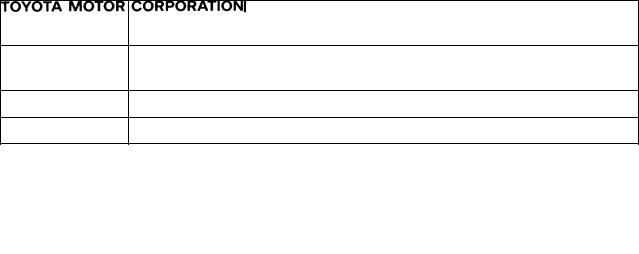
FOREWORD
To assist you in your sales and service activities, this manual explains the main characteristics of the 2001 model year vehicles, in particular providing a technical explanation of the construction and operation of new mechanisms and new technology used.
CAUTION, NOTICE, REFERENCE and NOTE are used in the following ways:
CAUTION
A potentially hazardous situation which could result in injury to people may occur if instructions on what to do or not do are ignored.
NOTICE
Damage to the vehicle or components may occur if instructions on what to do or not do are ignored.
REFERENCE Explains the theory behind mechanisms and techniques.
NOTE |
Notes or comments not included under the above 3 titles. |
All information contained herein is the most up-to-date at the time of publication. We reserve the right to make changes without prior notice.
2000 TOYOTA MOTOR CORPORATION
All rights reserved. This book may not be reproduced or copied, in whole or in part, without the written permission of Toyota Motor Corporation.
First Printing: Aug. 30, 2000 01-000830-00
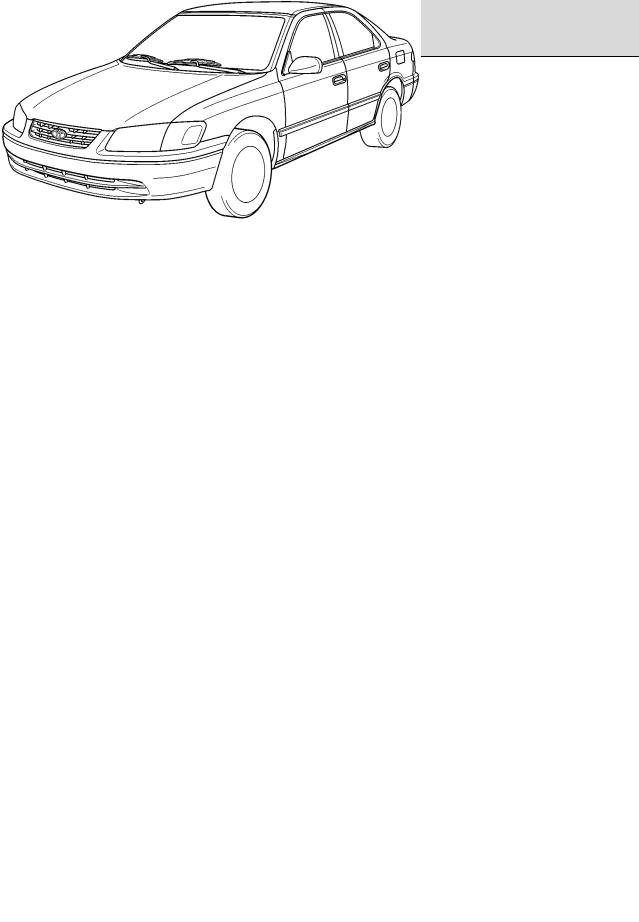
2 |
CAMRY - OUTLINE OF NEW FEATURES |
|
|
CAMRY
OUTLINE OF NEW FEATURES
The Camry is a high-quality family sedan with advanced technology and sporty performance. The following changes are made for the 2001 model year.
1. 5S-FE Engine
The 5S-FE engine that are equipped on the '00 California specification models, which comply with the U- LEV (Ultra-Low Emission Vehicle) requirements, have now been provided on the all models.
2. 1MZ-FE Engine
The 1MZ-FE engine that are equipped on the '00 California specification models, which comply with the LEV (Low Emission Vehicle) requirements, have now been provided on the all models with the automatic transaxle.
3. Brake
The size of front brake disc on 5S-FE engine model of CE grade has been changed from usual 255 mm (10.0 in.) for the 14-inch wheel to 275 mm (10.8 in.) for the 15-inch wheel.
4. Seat
A seat heater is established as an option to the driver seat and front passenger seat of the vehicle with leather seats for Canada, thus improved the heating performance in the cold districts.
5. Internal Trunk Release Handle
An internal trunk release handle is included inside the trunk in case a person inadvertently locks oneself within the trunk and needs to free oneself.
The handle is made of phosphorecent so that it is visible in the trunk for a while even after the trunk has been closed.
172CM01
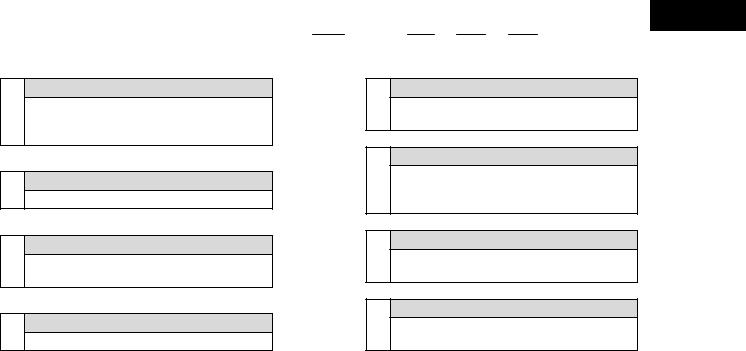
CAMRY - MODEL CODE & MODEL LINE-UP |
3 |
|
|
MODEL CODE
MCV20 L - C E P G K A 1
1 2 3 4 5 6 7 8
BASIC MODEL CODE
1SXV20 : With 5S-FE Engine SXV23 : With 5S-FNE Engine MCV20 : With 1MZ-FE Engine
STEERING WHEEL POSITION
2
L : Left-Hand Drive
MODEL NAME
3A : Camry (TMC*1 Made) C : Camry (TMMK*2 Made)
BODY TYPE
4
E : 4-Door Sedan
GEAR SHIFT TYPE
5M : 5-Speed Manual, Floor
P : 4-Speed Automatic, Floor
GRADE
6D : CE N : LE G : XLE
ENGINE SPECIFICATION
7K : DOHC and SFI C : CNG and DOHC
DESTINATION
8A : U.S.A. K : Canada
*1: TMC (Toyota Motor Corporation)
*2: TMMK (Toyota Motor Manufacturing Kentucky, Inc.)
MODEL LINE-UP
DES- |
|
BODY |
|
|
TRANSAXLE |
|
||
|
|
|
|
|
|
|||
TINA- |
ENGINE |
GRADE |
5-Speed Manual |
4-Speed Automatic |
||||
TYPE |
||||||||
TION |
|
|
|
|
|
|
||
|
|
S51 |
E153 |
A140E |
A541E |
|||
|
|
|
||||||
|
|
|
|
|
|
|
|
|
|
|
|
CE |
SXV20L- |
|
SXV20L- |
|
|
|
|
|
CEMDKA |
|
CEPDKA |
|
||
|
|
|
|
|
|
|||
|
|
|
|
|
|
|
|
|
|
5S-FE |
|
LE |
|
|
SXV20L- |
|
|
|
|
|
|
A(C)EPNKA |
|
|||
|
|
|
|
|
|
|
||
|
|
|
XLE |
|
|
SXV20L- |
|
|
|
|
|
|
|
A(C)EPGKA |
|
||
U.S.A. |
|
|
|
|
|
|
||
|
|
LE |
|
MCV20L- |
|
MCV20L- |
||
|
|
|
|
|
||||
|
|
|
|
CEMNKA |
|
A(C)EPNKA |
||
|
1MZ-FE |
|
|
|
|
|||
|
|
|
|
|
|
|
||
|
|
XLE |
|
|
|
MCV20L- |
||
|
|
|
|
|
|
|||
|
|
4-Door |
|
|
|
A(C)EPGKA |
||
|
|
|
|
|
|
|||
|
5S-FNE |
Sedan |
LE |
|
|
SXV23L- |
|
|
|
|
|
|
AEPNCA |
|
|||
|
|
|
|
|
|
|
||
|
|
|
|
|
|
|
|
|
|
|
|
CE |
SXV20L- |
|
SXV20L- |
|
|
|
|
|
AEMDKK |
|
AEPDKK |
|
||
|
5S-FE |
|
|
|
|
|||
|
|
|
|
|
|
|
||
|
|
LE |
|
|
SXV20L- |
|
||
|
|
|
|
|
|
|||
|
|
|
|
|
AEPNKK |
|
||
Canada |
|
|
|
|
|
|
||
|
|
|
|
|
|
|
||
|
|
CE |
|
|
|
MCV20L- |
||
|
|
|
|
|
|
|||
|
|
|
|
|
|
AEPDKK |
||
|
1MZ-FE |
|
|
|
|
|
||
|
|
XLE |
|
|
|
MCV20L- |
||
|
|
|
|
|
|
|||
|
|
|
|
|
|
AEPGKK |
||
|
|
|
|
|
|
|
||
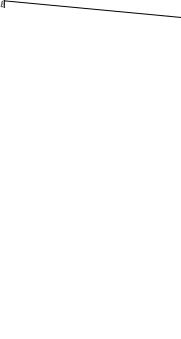
4 |
|
|
|
CAMRY - MAJOR TECHNICAL SPECIFICATIONS |
|
|
|||||
|
|
|
|
|
|||||||
MAJOR TECHNICAL SPECIFICATIONS |
|
|
|
|
|||||||
|
|
|
|
|
|
|
|
|
|
|
|
Item |
|
|
|
Area |
|
|
|
U.S.A. |
|
|
|
|
|
|
|
|
|
|
|
|
|||
|
|
|
|
|
|
|
|
|
|
|
|
|
Body Type |
|
|
|
|
|
4-Door Sedan |
|
|
||
|
|
|
|
|
|
|
|
|
|
|
|
|
Vehicle Grade |
|
|
|
CE |
|
LE |
XLE |
|
||
|
Model Code |
|
|
SXV20L-CEMDKA |
|
SXV20L-CEPDKA |
|
SXV20L-A(C)EPNKA |
SXV20L-A(C)EPGKA |
|
|
|
|
Length |
|
mm (in.) |
4790 (188.6) |
|
|
|
|
|
5 |
|
Overall |
Width |
|
mm (in.) |
1780 (70.1) |
|
|
|
|
1785 (70.3) |
|
|
|
Height*1 |
|
mm (in.) |
1415 (55.7) |
|
|
|
|
|
|
|
Wheel Base |
|
|
mm (in.) |
2670 (105.1) |
|
|
|
|
|
|
|
Tread |
Front |
|
mm (in.) |
1545 (60.8) |
|
|
|
|
|
|
|
Rear |
|
mm (in.) |
1520 (59.8) |
|
|
|
|
|
10 |
|
|
|
|
|
|
|||||||
|
Effective Head Room |
Front |
|
mm (in.) |
980 (38.6), 950 (37.4)*2 |
|
|
|
|
|
|
Weights |
Rear |
|
mm (in.) |
940 (37.0), 914 (36.0)*2 |
|
|
|
|
|
|
|
|
|
|
|
|
|||||||
Effective Leg Room |
Front |
|
mm (in.) |
1102 (43.4) |
|
|
|
|
|
|
|
|
|
|
|
|
|
|
|
|
|
|
|
Vehicle |
Rear |
|
mm (in.) |
901 (35.5) |
|
|
|
|
|
|
|
|
|
|
|
|
|||||||
|
|
|
|
|
|
|
|
|
|
15 |
|
|
Rear |
|
mm (in.) |
1425 (56.1) |
|
|
|
|
|
||
|
Shoulder Room |
Front |
|
mm (in.) |
1427 (56.2) |
|
|
|
|
|
|
& |
|
|
|
|
|
|
|
|
|
|
|
|
|
|
|
|
|
|
|
|
|
|
|
|
Front |
|
mm (in.) |
975 (38.4) |
|
|
|
|
|
|
|
Dimensions |
Angle of Approach |
|
|
|
20 |
||||||
|
|
degrees |
16 |
|
|
|
|
|
|||
|
Overhang |
Rear |
|
mm (in.) |
1145 (45.1) |
|
|
|
|
|
|
|
Min. Running Ground Clearance |
|
mm (in.) |
130 (5.1) |
|
|
|
|
|
|
|
Major |
|
|
|
|
|
|
|
|
|
|
|
Angle of Departure |
Front |
|
kg (lb) |
810 (1786) |
|
835 (1841) |
|
865 (1907)*3, 875 (1929)*4 |
870 (1918)*3, 875 (1929)*4 |
|
|
|
|
|
degrees |
16 |
|
|
|
|
|
|
|
|
|
|
|
|
|
|
|
|
|
|
|
|
Curb Weight |
Rear |
|
kg (lb) |
550 (1213) |
|
545 (1202) |
|
540 (1191)*3, 550 (1213)*4 |
545 (1202)*3, 555 (1224)*4 |
|
|
|
Total |
|
kg (lb) |
1360 (2999) |
|
1380 (3043) |
|
1405 (3097)*3, 1425 (3142)*4 |
1415 (3120)*3, 1430 (3153)*4 |
|
|
|
Front |
|
kg (lb) |
965 (2130) |
|
|
|
995 (2195) |
|
25 |
|
Gross Vehicle Weight |
Rear |
|
kg (lb) |
845 (1860) |
|
|
|
900 (1985) |
|
|
|
|
Total |
|
kg (lb) |
1810 (3990) |
|
|
|
1895 (4180) |
|
|
|
Fuel Tank Capacity |
(US.gal., lmp.gal) |
70 (18.5, 15.4) |
|
|
|
|
|
|
||
|
Luggage Compartment Capacity |
m3 (cu.ft.) |
0.399 (14.1) |
|
|
|
|
|
|
||
|
Max. Speed |
|
km / h (mph) |
180 (112) |
|
|
|
|
|
30 |
|
|
Max. Cruising Speed |
|
km / h (mph) |
Ð |
|
Ð |
|
Ð |
Ð |
|
|
|
Acceleration |
0 to 100 mph |
sec. |
Ð |
|
Ð |
|
Ð |
Ð |
|
|
Performance |
0 to 400 m |
sec. |
Ð |
|
Ð |
|
Ð |
Ð |
|
||
|
|
|
|
||||||||
Speed |
3rd Gear |
km / h (mph) |
147 (91) |
|
Ð |
|
Ð |
Ð |
|
||
|
|
1st Gear |
km / h (mph) |
52 (32) |
|
69 (43) |
|
|
|
|
|
|
Max. Permissible |
2nd Gear |
km / h (mph) |
95 (58) |
|
125 (78) |
|
|
|
35 |
|
|
|
|
|
|
|
|
|
|
|
|
|
|
|
4th Gear |
km / h (mph) |
Ð |
|
Ð |
|
Ð |
Ð |
|
|
|
Turning Diameter |
Wall to Wall |
m (ft.) |
11.5 (37.7) |
|
|
|
|
|
|
|
|
(Outside Front) |
Curb to Curb |
m (ft.) |
11.0 (36.1) |
|
|
|
|
|
|
|
|
Engine Type |
|
|
|
5S-FE |
|
|
|
|
|
40 |
|
Valve Mechanism |
|
|
|
16-Valve, DOHC |
|
|
|
|
|
|
|
Bore x Stroke |
|
|
mm (in.) |
87.0 x 91.0 (3.43 x 3.58) |
|
|
|
|
|
|
Engine |
Displacement |
|
cm3 (cu.in.) |
2164 (132.0) |
|
|
|
|
|
|
|
Compression Ratio |
|
|
|
9.5 : 1 |
|
|
|
|
|
|
|
|
Carburetor Type |
|
|
|
SFI |
|
|
|
|
|
45 |
|
Research Octane No. |
|
|
RON |
91 or Higher |
|
|
|
|
|
|
|
Max. Output (SAE-NET) |
kW / rpm (HP@rpm) |
99 / 5200 (133@5200) |
|
|
|
|
|
|
||
|
Max. Torque (SAE-NET) N.m / rpm (lb-ft@rpm) |
201 / 4400 (148@4400) |
|
|
|
|
|
|
|||
Engine Electrical |
Starter Output |
|
|
kW |
1.4 |
|
|
|
|
|
|
|
Battery Capacity (5HR) |
Voltage & Amp. hr. |
12-55, 12-48*5 |
|
|
|
|
|
|
||
|
Generator Output |
|
|
Watts |
960 |
|
|
|
|
|
50 |
|
|
|
|
|
|
|
|
|
|
|
|
|
Clutch Type |
|
|
|
Dry, Single Plate |
|
Ð |
|
Ð |
Ð |
|
|
Transaxle Type |
|
|
|
S51 |
|
A140E |
|
|
|
|
|
|
In First |
|
|
3.538 |
|
2.810 |
|
|
|
|
|
|
In Second |
|
|
1.960 |
|
1.549 |
|
|
|
55 |
|
Transmission Gear |
In Third |
|
|
1.250 |
|
1.000 |
|
|
|
|
|
Ratio |
In Fourth |
|
|
0.945 |
|
0.706 |
|
|
|
|
|
|
In Fifth |
|
|
0.731 |
|
Ð |
|
Ð |
Ð |
|
|
|
In Reverse |
|
3.153 |
|
2.296 |
|
|
|
|
|
|
Counter Gear Ratio |
|
|
|
Ð |
|
0.945 |
|
|
|
60 |
Chassis |
Differential Gear Ratio (Final) |
|
|
3.944 |
|
|
|
|
|
|
|
|
|
|
|
|
|
|
|
|
|
|
|
Brake Type |
Front |
|
|
Ventilated Disc |
|
|
|
|
|
|
|
|
|
|
|
|
|
|
|
|
|
|
|
|
Rear |
|
|
L.T. Drum |
|
|
|
|
|
|
|
|
|
|
|
|
|
|
|||||
|
|
|
|
|
|
|
|
|
|
|
|
|
Parking Brake Type |
|
|
|
Drum |
|
|
|
|
|
|
|
|
|
|
|
|
|
|
|
|
|
|
|
Brake Booster Type and Size |
|
in. |
Tandem 8º + 9º |
|
|
|
Tandem 8.5º + 8.5º*3, 8º + 9º*4 |
|
65 |
|
|
Proportioning Valve Type |
|
|
Dual-P Valve |
|
|
|
|
|
|
|
|
|
|
|
|
|
|
|
|
|
|
|
|
Suspension Type |
Front |
|
|
MacPherson Strut |
|
|
|
|
|
|
|
Rear |
|
|
MacPherson Strut |
|
|
|
|
|
|
|
|
|
|
|
|
|
|
|||||
|
|
|
|
|
|
|
|
|
|
|
|
|
Stabilizer Bar |
Front |
|
|
STD |
|
|
|
|
|
|
|
|
|
|
|
|
|
|
|
|
|
|
|
Rear |
|
|
STD |
|
|
|
|
|
70 |
|
|
|
|
|
|
|
||||||
|
Steering Gear Type |
|
|
|
Rack and Pinion |
|
|
|
|
|
|
|
Steering Gear Ratio (Overall) |
|
|
17.4 : 1 |
|
|
|
|
|
|
|
|
Power Steering Type |
|
|
|
Integral Type |
|
|
|
|
|
|
*1: Unladed Vehicle |
|
|
*4: Produced by TMMK |
|
|
|
|
|
|
||
*2: With Moor Roof |
|
|
*5: Without Cold Area Specification Model |
|
|
|
|
||||
*3: Produced by TMC |
|
|
|
|
|
|
|
|
|
|
|
CAMRY - MAJOR TECHNICAL SPECIFICATIONS |
5 |
|
|
|
|
|
U.S.A. |
|
|
|
Canada |
|
|
|
|
|
|
|
|
|
|
|
|
|
|
|
|
|
|
4-Door Sedan |
|
|
|
|
1 |
|
|
|
|
|
|
|
|
|
|
|
|
|
|
LE |
XLE |
|
CE |
LE |
|
|||
|
|
|
|
|
||||||
5 |
MCV20L-CEMNKA |
|
MCV20L-A(C)EPNKA |
MCV20L-A(C)EPGKA |
SXV20L-AEMDKK |
|
SXV20L-AEPDKK |
SXV20L-AEPNKK |
|
|
|
||||||||||
|
|
|
|
|
|
|
|
|
|
|
|
|
|
|
|
|
|
|
|
|
|
|
1780 (70.1) |
|
|
1785 (70.3) |
1780 (70.1) |
|
|
|
|
|
|
|
|
|
|
|
|
|
|
|
|
|
1420 (55.9) |
|
|
|
1415 (55.7) |
|
|
|
|
|
|
|
|
|
|
|
|
|
|
|
|
|
|
|
|
|
|
|
|
|
|
|
|
|
|
|
|
|
|
|
|
|
|
|
|
|
|
|
|
|
|
|
|
|
10 |
|
|
|
|
|
|
|
|
|
|
|
|
|
|
|
|
|
|
|
|
|
|
|
|
|
|
|
|
|
|
|
|
|
|
|
|
|
|
|
|
|
|
|
|
|
|
|
|
|
|
|
|
|
|
|
|
|
|
|
|
|
|
|
|
|
|
|
|
|
|
|
|
|
|
|
|
|
|
|
|
|
|
|
|
|
|
|
|
|
|
|
|
|
|
|
|
|
|
|
|
|
|
|
|
|
|
|
|
|
15 |
|
|
|
|
|
|
|
|
|
|
|
|
|
|
|
|
|
|
|
|
|
|
|
|
|
|
|
|
|
|
|
|
|
|
|
|
|
|
|
|
|
|
|
|
|
|
|
|
|
|
|
|
|
|
|
|
|
|
|
|
|
|
|
|
|
|
|
|
|
|
|
|
|
|
|
|
|
|
|
|
|
|
|
|
|
|
|
|
|
|
|
|
|
|
|
|
|
|
|
135 (5.3) |
|
|
|
130 (5.1) |
|
|
|
|
|
20 |
|
|
|
|
|
|
|
|
|
|
|
|
|
|
|
|
|
|
|
|
|
|
|
|
|
|
|
|
|
|
|
|
|
|
|
|
|
|
|
|
|
|
|
|
880 (1940) |
|
920 (2028)*3, 920 (2028)*4 |
920 (2028)*3, 925 (2039)*4 |
810 (1786) |
|
830 (1830) |
870 (1918) |
|
|
|
560 (1234) |
|
1460 (3219)*3, 550 (1213)*4 |
545 (1202)*3, 555 (1224)*4 |
535 (1179) |
|
|
540 (1191) |
|
|
|
1440 (3174) |
|
1460 (3219)*3, 1470 (3241)*4 |
1465 (3230)*3, 1480 (3263)*4 |
1345 (2965) |
|
1365 (3009) |
1410 (3109) |
|
|
25 |
1040 (2290) |
|
|
|
965 (2130) |
|
|
995 (2195) |
|
|
|
|
|
|
|
845 (1860) |
|
|
900 (1985) |
|
|
|
1940 (4275) |
|
|
|
1810 (3990) |
|
|
1895 (4180) |
|
|
|
|
|
|
|
|
|
|
|
|
|
|
|
|
|
|
|
|
|
|
|
|
|
|
|
|
|
|
|
|
|
|
|
|
|
|
|
|
|
|
|
|
|
|
30 |
210 (130) |
|
|
|
180 (112) |
|
|
|
|
|
|
Ð |
|
Ð |
Ð |
Ð |
|
Ð |
Ð |
|
|
|
|
|
|
|
|
|
|
|
|
|
|
Ð |
|
Ð |
Ð |
Ð |
|
Ð |
Ð |
|
|
|
|
|
|
|
|
|
|
|
|
|
|
Ð |
|
Ð |
Ð |
Ð |
|
Ð |
Ð |
|
|
|
|
|
|
|
|
|
|
|
|
|
|
57 (35) |
|
70 (43) |
|
52 (32) |
|
69 (43) |
|
|
|
|
|
|
|
|
|
|
|
|
|
|
35 |
97 (60) |
|
127 (79) |
|
93 (58) |
|
125 (78) |
|
|
|
|
148 (92) |
|
Ð |
Ð |
147 (91) |
|
Ð |
Ð |
|
|
|
|
|
|
|
|
|
|
|
|
|
|
Ð |
|
Ð |
Ð |
Ð |
|
Ð |
Ð |
|
|
|
|
|
|
|
|
|
|
|
|
|
|
11.9 (39.0) |
|
|
|
11.5 (37.7) |
|
|
|
|
|
|
|
|
|
|
|
|
|
|
|
|
|
11.4 (37.4) |
|
|
|
11.0 (36.1) |
|
|
|
|
|
40 |
1MZ-FE |
|
|
|
5S-FE |
|
|
|
|
|
|
24-Valve, DOHC |
|
|
|
16-Valve, DOHC |
|
|
|
|
|
|
87.5 x 83.0 (3.44 x 3.27) |
|
|
|
87.0 x 91.0 (3.43 x 3.58) |
|
|
|
|
|
|
2995 (182.7) |
|
|
|
2164 (1320) |
|
|
|
|
|
|
10.5 : 1 |
|
|
|
9.5 : 1 |
|
|
|
|
|
45 |
|
|
|
|
|
|
|
|
|
|
|
|
|
|
|
|
|
|
|
|
|
|
91 or higher |
|
|
|
|
|
|
|
|
|
|
145 / 5200 (194@5200) |
|
143 / 5200 (192@5200) |
|
99 / 5200 (133@5200) |
|
|
|
|
|
|
283 / 4400 (209@4400) |
|
281 / 4400 (207@4400) |
|
201 / 4400 (148@4400) |
|
|
|
|
|
|
|
|
|
|
12-55 |
|
|
|
|
|
50 |
|
|
|
|
|
|
|
|
|
|
|
|
|
|
|
|
|
|
|
|
|
|
|
|
|
|
|
|
|
|
|
|
|
|
|
|
|
|
|
|
|
|
|
|
Dry, single Plate |
|
Ð |
Ð |
Dry, Single Plate |
|
Ð |
Ð |
|
|
|
E153 |
|
A541E |
|
S51 |
|
A140E |
|
|
|
|
3.230 |
|
2.810 |
|
3.538 |
|
2.810 |
|
|
|
55 |
1.913 |
|
1.549 |
|
1.960 |
|
1.549 |
|
|
|
|
1.258 |
|
1.000 |
|
1.250 |
|
1.000 |
|
|
|
|
0.918 |
|
0.735 |
|
0.945 |
|
0.706 |
|
|
|
|
0.731 |
|
Ð |
Ð |
0.731 |
|
Ð |
Ð |
|
|
|
|
|
|
|
|
|
|
|
|
|
|
3.545 |
|
2.296 |
|
3.153 |
|
2.296 |
|
|
|
|
|
|
|
|
|
|
|
|
|
|
60 |
Ð |
|
0.945 |
|
Ð |
|
0.945 |
|
|
|
|
3.933 |
|
|
|
3.944 |
|
|
|
|
|
|
|
|
|
|
|
|
|
|
|
|
|
|
|
|
|
|
|
|
|
|
|
|
|
|
|
|
|
|
|
|
|
|
|
Solid Disc |
|
|
|
L.T. Drum |
|
|
|
|
|
|
|
|
|
|
|
|
|
|
|
|
|
|
|
|
|
|
|
|
|
|
|
|
|
|
|
|
|
|
|
|
|
|
65 |
Tandem 8º + 9º |
|
Tandem 8.5º + 8.5º*3, 8º + 9º*4 |
|
Tandem 8.5º + 8.5º |
|
|
|
|
|
|
|
|
|
|
|
|
|
|
|
|
|
|
|
|
|
|
|
|
|
|
|
|
|
|
|
|
|
|
|
|
|
|
|
|
|
|
|
|
|
|
|
|
|
|
|
|
|
|
|
|
|
|
|
|
|
|
|
|
|
|
|
|
|
|
|
|
|
|
|
|
|
|
|
|
|
|
70 |
|
|
|
|
|
|
|
|
|
|
|
|
|
|
|
|
|
|
|
|
|
|
|
|
|
|
|
|
|
|
|
|
|
|
|
|
|
|
|
|
|
|
|
|
|
|
|
|
|
|
|
|
|
|
|
|
|
|
|
|
|
|
|
|
|
|
|
|
|
|
|
|
|
|
|
|
|
|
|
|
|
|
|
|
|
|
|
|
|
|
|
|
|
|
|
|
|
|
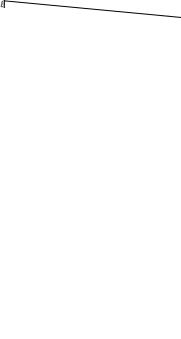
6 |
CAMRY - MAJOR TECHNICAL SPECIFICATIONS |
|
|
Item |
|
|
|
Area |
|
Canada |
|
U.S.A. |
|
|
|
|
|
|
|
|
|
||||
|
|
|
|
|
|
|
|
|
|
|
|
Body Type |
|
|
|
|
|
4-Door Sedan |
|
|
|
|
|
|
|
|
|
|
|
|
|
|
|
Vehicle Grade |
|
|
|
CE |
|
XLE |
LE |
|
|
|
Model Code |
|
|
|
MCV20L-AEPDKK |
|
MCV20L-AEPGKK |
SXV23L-AEPNCA |
|
|
|
|
Length |
mm (in.) |
|
4790 (188.6) |
|
|
|
5 |
|
|
Overall |
Width |
mm (in.) |
|
1780 (70.1) |
|
1785 (70.3) |
1780 (70.1) |
|
|
|
|
Height*1 |
mm (in.) |
|
1420 (55.9) |
|
|
|
|
|
|
Wheel Base |
|
mm (in.) |
|
2670 (105.1) |
|
|
|
|
|
|
Tread |
Front |
mm (in.) |
|
1545 (60.8) |
|
|
|
|
|
|
Rear |
mm (in.) |
|
1520 (59.8) |
|
|
|
10 |
||
|
|
|
|
|||||||
|
Effective Head Room |
Front |
mm (in.) |
|
980 (38.6), 950 (37.4)*2 |
|
|
980 (38.6) |
|
|
Weights |
Rear |
mm (in.) |
|
940 (37.0), 914 (36.0)*2 |
|
|
940 (37.0) |
|
||
|
|
|
|
|||||||
Effective Leg Room |
Front |
mm (in.) |
|
1102 (43.4) |
|
|
|
|
||
|
|
|
|
|||||||
|
|
|
|
|
|
|
|
|
|
|
Vehicle |
Rear |
mm (in.) |
|
901 (35.5) |
|
|
|
|
||
|
|
|
|
|||||||
|
|
|
|
|
|
|
|
15 |
||
|
Rear |
mm (in.) |
|
1425 (56.1) |
|
|
|
|||
|
Shoulder Room |
Front |
mm (in.) |
|
1427 (56.2) |
|
|
|
||
& |
|
|
|
|
|
|
|
|
|
|
|
|
|
|
|
|
|
|
|
|
|
|
Front |
mm (in.) |
|
975 (38.4) |
|
|
|
|
||
Dimensions |
Angle of Approach |
|
|
20 |
||||||
|
degrees |
|
16 |
|
|
16 |
||||
|
Overhang |
Rear |
mm (in.) |
|
1145 (45.1) |
|
|
|
|
|
|
Min. Running Ground Clearance |
mm (in.) |
|
135 (5.3) |
|
|
130 (5.1) |
|
||
Major |
|
|
|
|
|
|
|
|
|
|
Angle of Departure |
|
degrees |
|
16 |
|
|
16 |
|
||
|
|
|
|
|
||||||
|
|
Front |
|
kg (lb) |
|
860 (1896) |
|
920 (2028) |
860 (1896) |
|
|
Curb Weight |
Rear |
|
kg (lb) |
|
540 (1190) |
|
545 (1202) |
595 (1312) |
|
|
|
Total |
|
kg (lb) |
|
1400 (3086) |
|
1465 (3230) |
1455 (3208) |
|
|
|
Front |
|
kg (lb) |
|
1040 (2290) |
|
|
970 (2140) |
25 |
|
Gross Vehicle Weight |
Rear |
|
kg (lb) |
|
900 (1985) |
|
|
950 (2095) |
|
|
|
Total |
|
kg (lb) |
|
1940 (4275) |
|
|
1920 (4235) |
|
|
Fuel Tank Capacity |
(US.gal., lmp.gal) |
|
70 (18.5, 15.4) |
|
|
135 (35.7, 29.2)*5, 43 (11.4, 9.5)*6 |
|
||
|
Luggage Compartment Capacity |
m3 (cu.ft.) |
|
0.399 (14.1) |
|
|
0.332 m3 *7, 8.921 ft3 *8 |
|
||
|
Max. Speed |
|
km / h (mph) |
|
210 (130) |
|
|
180 (112) |
30 |
|
|
Max. Cruising Speed |
|
km / h (mph) |
|
Ð |
|
|
Ð |
|
|
|
Acceleration |
0 to 100 km / h |
sec. |
|
Ð |
|
Ð |
Ð |
|
|
Performance |
0 to 400 m |
sec. |
|
Ð |
|
Ð |
Ð |
|
||
|
|
|
|
|||||||
Speed |
3rd Gear |
km / h (mph) |
|
Ð |
|
Ð |
Ð |
|
||
|
|
1st Gear |
km / h (mph) |
|
70 (43) |
|
|
66 (41) |
|
|
|
Max. Permissible |
2nd Gear |
km / h (mph) |
|
127 (79) |
|
|
119 (74) |
35 |
|
|
|
|
|
|
|
|
|
|
|
|
|
|
4th Gear |
km / h (mph) |
|
Ð |
|
Ð |
Ð |
|
|
|
Turning Diameter |
Wall to Wall |
m (ft.) |
|
11.9 (39.0) |
|
|
|
|
|
|
(Outside Front) |
Curb to Curb |
m (ft.) |
|
11.4 (37.4) |
|
|
|
|
|
|
Engine Type |
|
|
|
|
1MZ-FE |
|
|
5S-FNE |
40 |
|
Valve Mechanism |
|
|
|
|
24-Valve, DOHC |
|
|
16-Valve, DOHC |
|
|
Bore x Stroke |
|
mm (in.) |
|
87.5 x 83.0 (3.44 x 3.27) |
|
|
87.0 x 91.0 (3.43 x 3.58) |
|
|
Engine |
Displacement |
|
cm3 (cu.in.) |
|
2995 (182.7) |
|
|
2164 (132.0) |
|
|
Compression Ratio |
|
|
|
|
10.5 : 1 |
|
|
11.0 : 1 |
|
|
|
Carburetor Type |
|
|
|
|
SFI |
|
|
|
45 |
|
Research Octane No. |
|
|
RON |
|
91 or higher |
|
|
130 |
|
|
Max. Output (SAE-NET) |
kW / rpm (HP@rpm) |
|
143 / 5200 (192@5200) |
|
|
88 / 5200 (118@5200) |
|
||
|
Max. Torque (SAE-NET) N.m / rpm (lb-ft@rpm) |
|
281 / 4400 (207@4400) |
|
|
178 / 2400 (131@2400) |
|
|||
Engine Electrical |
Starter Output |
|
|
kW |
|
1.4 |
|
|
|
|
|
Battery Capacity (5HR) |
Voltage & Amp. hr. |
|
12-55 |
|
|
|
|
||
|
Generator Output |
|
|
Watts |
|
960 |
|
|
|
50 |
|
|
|
|
|
|
|
|
|
|
|
|
Clutch Type |
|
|
|
|
Ð |
|
Ð |
Ð |
|
|
Transaxle Type |
|
|
|
|
A541E |
|
|
A140E |
|
|
|
In First |
|
|
|
2.810 |
|
|
2.810 |
|
|
|
In Second |
|
|
|
1.549 |
|
|
1.549 |
55 |
|
Transmission Gear |
In Third |
|
|
|
1.000 |
|
|
1.000 |
|
|
Ratio |
In Fourth |
|
|
|
0.735 |
|
|
0.706 |
|
|
|
In Fifth |
|
|
|
Ð |
|
Ð |
Ð |
|
|
|
In Reverse |
|
|
2.296 |
|
|
|
|
|
|
|
|
|
|
|
|
|
|
|
|
|
Counter Gear Ratio |
|
|
|
|
|
|
|
0.945 |
60 |
Chassis |
Differential Gear Ratio (Final) |
|
|
|
3.933 |
|
|
4.176 |
|
|
|
|
|
|
|
|
|
|
|
|
|
Brake Type |
Front |
|
|
|
Ventilated Disc |
|
|
|
|
|
|
|
|
|
|
|
|
|
|
|
|
|
Rear |
|
|
|
Solid Disc |
|
|
L.T. Drum |
|
|
|
|
|
|
|
|
|
||||
|
|
|
|
|
|
|
|
|
|
|
|
Parking Brake Type |
|
|
|
|
Drum |
|
|
|
|
|
|
|
|
|
|
|
|
|
|
|
|
Brake Booster Type and Size |
|
in. |
|
Tandem 8.5º + 8.5º |
|
|
|
65 |
|
|
Proportioning Valve Type |
|
|
|
Dual-P Valve |
|
|
|
|
|
|
|
|
|
|
|
|
|
|
|
|
|
Suspension Type |
Front |
|
|
|
MacPherson Strut |
|
|
|
|
|
Rear |
|
|
|
MacPherson Strut |
|
|
|
|
|
|
|
|
|
|
|
|
||||
|
Stabilizer Bar |
Front |
|
|
|
STD |
|
|
|
|
|
Rear |
|
|
|
STD |
|
|
|
70 |
|
|
|
|
|
|
|
|||||
|
Steering Gear Type |
|
|
|
|
Rack and Pinion |
|
|
|
|
|
Steering Gear Ratio (Overall) |
|
|
|
17.4 : 1 |
|
|
|
|
|
|
Power Steering Type |
|
|
|
|
Integral Type |
|
|
|
|
*1: Unladed Vehicle |
|
|
*5: Water Volume |
|
|
|
||||
*2: With Moon Roof |
|
|
*6: Equivalent Gasoline Capacity |
|
|
|
||||
*3: Produced by TMC |
|
|
*7: VDA |
|
|
|
|
|
||
*4: Produced by TMMK |
|
|
*8: SAE Suitcase |
|
|
|
||||

IN±1
INTRODUCTION ± HOW TO USE THIS MANUAL
HOW TO USE THIS MANUAL
IN00U±22
GENERAL INFORMATION
1.INDEX
An INDEX is provided on the first page of each section to guide you to the item to be repaired. To assist you in finding your way through the manual, the Section Title and major heading are given at the top of every page.
2.GENERAL DESCRIPTION
At the beginning of each section, a General Description is given that pertains to all repair operations contained in that section.
Read these precautions before starting any repair task.
3.TROUBLESHOOTING
TROUBLESHOOTING tables are included for each system to help you diagnose the problem and find the cause. The fundamentals of how to proceed with troubleshooting are described on page IN±21.
Be sure to read this before performing troubleshooting.
4.PREPARATION
Preparation lists the SST (Special Service Tools), recommended tools, equipment, lubricant and SSM (Special Service Materials) which should be prepared before beginning the operation and explains the purpose of each one.
5.REPAIR PROCEDURES
Most repair operations begin with an overview illustration. It identifies the components and shows how the parts fit together.
Example:
|
|
|
|
|
|
|
|
Filler Cap |
|
|
|
|
|
|
|
|||||||
|
|
|
|
|
|
|
|
Float |
|
|
Clevis Pin |
|
|
|||||||||
|
|
|
|
|
|
|
|
Reservoir Tank |
|
Gasket |
|
|
Clip |
|||||||||
|
|
|
|
|
|
|
|
Boot |
|
|
|
|
|
|||||||||
|
|
|
|
|
|
|
|
Grommet |
|
|
|
|
|
|||||||||
|
|
|
|
|
|
|
|
|
|
|
|
|
|
|
||||||||
|
|
|
|
|
|
|
|
|
|
|
|
|
|
|
||||||||
|
|
|
|
|
|
|
|
|
|
|
|
|
|
|
|
|
|
|
|
|
|
|
|
|
|
|
|
|
|
|
|
|
|
|
|
|
|
|
|
|
|
|
|
|
|
|
|
|
|
|
|
|
|
|
|
|
|
|
|
|
|
|
|
|
|
|
|
|
|
Slotted Spring Pin |
|
|
|
|
|
|
|
|
|
|
|
|
|
|
|||||||
|
|
|
12 (120, 9) |
|
|
|
|
|
|
|
|
|
|
|
||||||||
|
|
|
|
|
|
|
|
|||||||||||||||
|
|
|
|
|
|
|
|
|
|
|
|
|
|
|
|
|
|
|
|
|
|
|
|
|
|
|
|
|
|
|
|
|
|
|
|
|
|
|
|
|
|
Clevis |
|
|
|
|
|
|
|
|
|
|
|
|
|
|
|
|
|
|
|
|
|
|||||
|
15 (155, 11) |
|
|
|
|
|
|
|
|
|
|
|
|
|
|
|
|
|
|
|
|
|
|
|
|
|
|
|
|
|
|
|
|
Snap Ring |
|
|
|
|
|||||||
|
|
|
|
|
|
|
|
|
|
|
|
|
|
|
|
|
|
|||||
|
|
|
|
|
|
|
|
|
|
|
|
|
|
|
|
|
|
|||||
|
|
|
|
|
|
|
|
|
|
|
|
|
||||||||||
|
|
|
|
|
|
|
|
|
|
|
|
|
Washer |
|
|
Lock Nut |
|
|
||||
|
|
|
|
|
|
|
|
|
|
|
|
Push Rod |
|
|
|
|
|
|
|
|||
|
|
|
|
|
|
|
|
|
|
Piston |
|
|
|
|
|
|
|
|||||
|
|
|
|
|
|
|
|
|
|
|
|
|
|
|
|
|
|
|
|
|
|
|
|
|
|
|
|
|
|
|
|
|
|
|
|
|
|
|
|
|
|
|
|
|
|
|
|
|
|
|
Cylinder |
|
|
|
|
|
|
|
|
|
|
|
|
|
|
|
||
|
|
|
|
|
|
|
|
|
|
|
|
|
||||||||||
|
N´m (kgf´cm, ft´lbf) |
: Specified torque |
|
|
|
|
|
|
|
|||||||||||||
|
Non±reusable part |
|
|
|
|
|
|
|
|
|
|
|
|
|
|
N17080 |
||||||
|
|
|
|
|
|
|
|
|
|
|
|
|
|
|
|
|
|
|
|
|
|
|
|
|
|
|
|
|
|
|
|
|
|
|
|
|
|
|
|
|
|
|
|
|
|
Author : |
Date : |
1 |
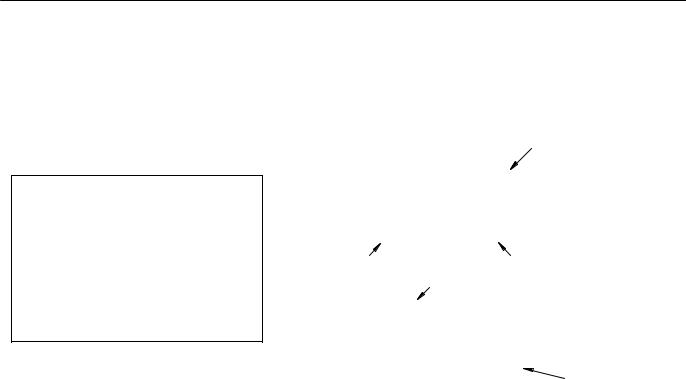
IN±2
INTRODUCTION ± HOW TO USE THIS MANUAL
The procedures are presented in a step±by±step format:
The illustration shows what to do and where to do it.
The task heading tells what to do.
The detailed text tells how to perform the task and gives other information such as specifications and warnings.
Example:
Illustration: what to do and where
Task heading : what to do
21. CHECK PISTON STROKE OF OVERDRIVE BRAKE
(a)Place SST and a dial indicator onto the overdrive brake piston as shown in the illustration.
SST 09350±30020 (09350±06120)
Set part No. |
Component part No. |
Detailed text : how to do task
(b)Measure the stroke applying and releasing the compressed air (392 785 kPa, 4 8 kgf/cm2 or 57 114 psi) as shown in the illustration.
Piston stroke: 1.40 1.70 mm (0.0551 0.0669 in.)
Specification
This format provides the experienced technician with a FAST TRACK to the information needed. The upper case task heading can be read at a glance when necessary, and the text below it provides detailed information. Important specifications and warnings always stand out in bold type.
6.REFERENCES
References have been kept to a minimum. However, when they are required you are given the page to refer to.
7.SPECIFICATIONS
Specifications are presented in bold type throughout the text where needed. You never have to leave the procedure to look up your specifications. They are also found in Service Specifications section, for quick reference.
8. |
CAUTIONS, NOTICES, HINTS: |
|
CAUTIONS are presented in bold type, and indicate there is a possibility of injury to you or other |
|
people. |
|
NOTICES are also presented in bold type, and indicate the possibility of damage to the components |
|
being repaired. |
|
HINTS are separated from the text but do not appear in bold. They provide additional information to |
|
help you perform the repair efficiently. |
9. |
SI UNIT |
The UNITS given in this manual are primarily expressed according to the SI UNIT (International System of Unit), and alternately expressed in the metric system and in the English System.
Example:
Torque: 30 N´m (310 kgf´cm, 22 ft´lbf)
Author : |
Date : |
2 |

IN±3
INTRODUCTION ± IDENTIFICATION INFORMATION
IDENTIFICATION INFORMATION
IN0CN±03
VEHICLE IDENTIFICATION AND
ENGINE SERIAL NUMBER
1.VEHICLE IDENTIFICATION NUMBER
A
The vehicle identification number is stamped on the vehicle identification number plate and the certification label, as shown in the illustration.
A:Vehicle Identification Number Plate
B:Certification Label
B
B01453
2. ENGINE SERIAL NUMBER
5S±FE engine:
The engine serial number is stamped on the engine block, as shown in the illustration.
1MZ±FE engine:
B02122
Author : |
Date : |
3 |
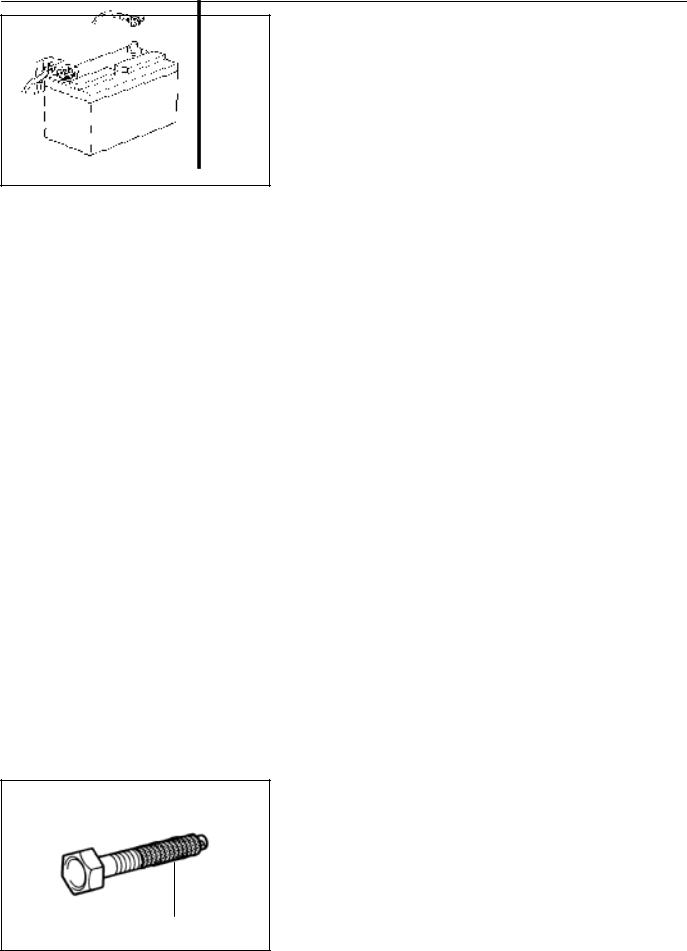
IN±4
INTRODUCTION ± REPAIR INSTRUCTIONS
FI1066
Seal Lock Adhesive
Z11554
REPAIR INSTRUCTIONS
IN0CO±04
GENERAL INFORMATION
BASIC REPAIR HINT
(a)Use fender, seat and floor covers to keep the vehicle clean and prevent damage.
(b)During disassembly, keep parts in the appropriate order to facilitate reassembly.
(c)Installation and removal of battery terminal:
(1)Before performing electrical work, disconnect the negative (±) terminal cable from the battery.
(2)If it is necessary to disconnect the battery for inspection or repair, first disconnect the negative (±) terminal cable.
(3)When disconnecting the terminal cable, to prevent damage to battery terminal, loosen the cable nut and raise the cable straight up without twisting or prying it.
(4)Clean the battery terminals and cable ends with a clean shop rag. Do not scrape them with a file or other abrasive objects.
(5)Install the cable ends to the battery terminals after loosening the nut, and tighten the nut after installation. Do not use a hammer to tap the cable ends onto the terminals.
(6)Be sure the cover for the positive (+) terminal is properly in place.
(d)Check hose and wiring connectors to make sure that they are connected securely and correctly.
(e)Non±reusable parts
(1)Always replace cotter pins, gaskets, O±rings, oil seals, etc. with new ones.
(2)Non±reusable parts are indicated in the component illustrations by the º º symbol.
(f)Precoated parts
Precoated parts are bolts, nuts, etc. that are coated with a seal lock adhesive at the factory.
(1)If a precoated part is retightened, loosened or caused to move in any way, it must be recoated with the specified adhesive.
(2)When reusing precoated parts, clean off the old adhesive and dry with compressed air. Then apply the specified seal lock adhesive to the bolt, nut or threads.
Author : |
Date : |
4 |
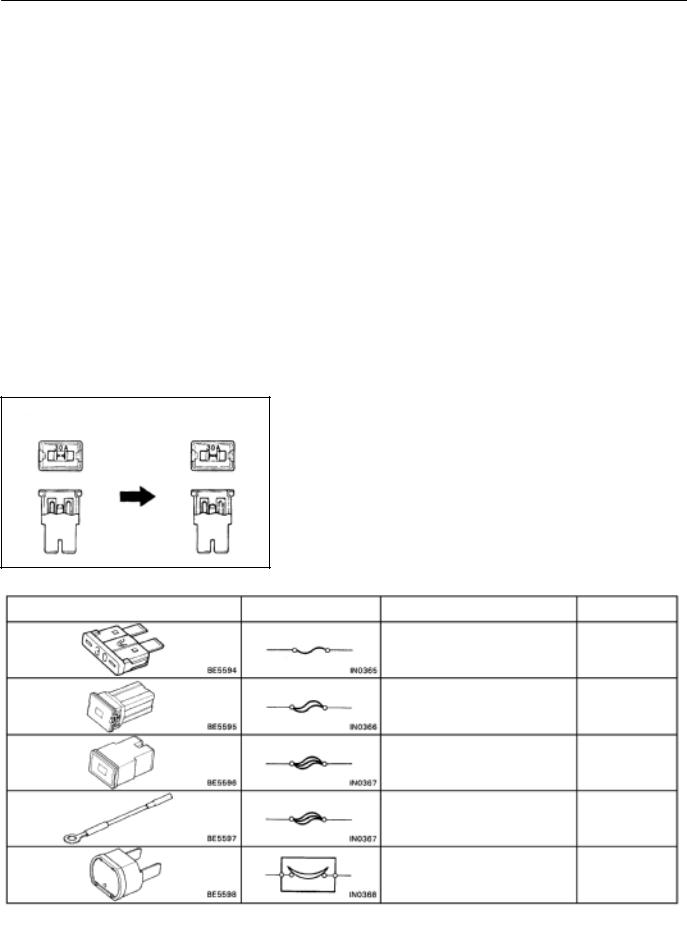
IN±5
INTRODUCTION ± REPAIR INSTRUCTIONS
(3)Precoated parts are indicated in the component illustrations by the º º symbol.
(g)When necessary, use a sealer on gaskets to prevent leaks.
(h)Carefully observe all specifications for bolt tightening torques. Always use a torque wrench.
(i)Use of special service tools (SST) and special service materials (SSM) may be required, depending on the nature of the repair. Be sure to use SST and SSM where specified and follow the proper work procedure. A list of SST and SSM can be found in Preparation section in this manual.
Medium Current Fuse and High Current Fuse |
(j) When replacing fuses, be sure the new fuse has the cor- |
|
rect amperage rating. DO NOT exceed the rating or use |
||
Equal Amperage Rating |
||
|
one with a lower rating. |
BE1367
Illustration |
Symbol |
Part Name |
Abbreviation |
|
|
FUSE |
FUSE |
|
|
MEDIUM CURRENT FUSE |
M±FUSE |
|
|
HIGH CURRENT FUSE |
H±FUSE |
|
|
FUSIBLE LINK |
FL |
|
|
CIRCUIT BREAKER |
CB |
|
|
|
V00076 |
Author : |
Date : |
5 |

IN±6
INTRODUCTION ± REPAIR INSTRUCTIONS
WRONG CORRECT
IN0253
WRONG CORRECT
IN0252
(k)Care must be taken when jacking up and supporting the vehicle. Be sure to lift and support the vehicle at the proper locations (See page IN±8).
Cancel the parking brake on the level place and shift the transmission in Neutral (or N position).
When jacking up the front wheels of the vehicle at first place stoppers behind the rear wheels.
When jacking up the rear wheels of the vehicle at first place stoppers before the front wheels.
When either the front or rear wheels only should be jacked up, set rigid racks and place stoppers in front and behind the other wheels on the ground.
After the vehicle is jacked up, be sure to support it on rigid racks . It is extremely dangerous to do any work on a vehicle raised on a jack alone, even for a small job that can be finished quickly.
(l)Observe the following precautions to avoid damage to the
following parts:
(1)Do not open the cover or case of the ECU unless absolutely necessary. (If the IC terminals are touched, the IC may be destroyed by static electricity.)
(2)To disconnect vacuum hoses, pull off the end, not the middle of the hose.
(3)To pull apart electrical connectors, pull on the connector itself, not the wires.
(4)Be careful not to drop electrical components, such as sensors or relays. If they are dropped on a hard floor, they should be replaced and not reused.
(5)When steam cleaning an engine, protect the electronic components, air filter and emission±related components from water.
(6)Never use an impact wrench to remove or install temperature switches or temperature sensors.
(7)When checking continuity at the wire connector, insert the tester probe carefully to prevent terminals from bending.
(8)When using a vacuum gauge, never force the hose onto a connector that is too large. Use a step±down adapter for adjustment. Once the hose has been stretched, it may leak air.
Author : |
Date : |
6 |

IN±7
INTRODUCTION ± REPAIR INSTRUCTIONS
Example |
(m) Installation and removal of vacuum hose: |
|
(1) When disconnecting vacuum hoses, use tags to |
||
|
||
|
identify how they should be reconnected to. |
|
|
(2) After completing a job, double check that the vacu- |
|
|
um hoses are properly connected. A label under the |
|
|
hood shows the proper layout. |
|
|
(n) Unless otherwise stated, all resistance is measured at an |
|
|
ambient temperature of 20°C (68°F). Because the resis- |
|
IN0002 |
tance may be outside specifications if measured at high |
|
|
temperatures immediately after the vehicle has been run- |
|
|
||
|
ning, measurement should be made when the engine has |
|
|
cooled down. |
Author : |
Date : |
7 |
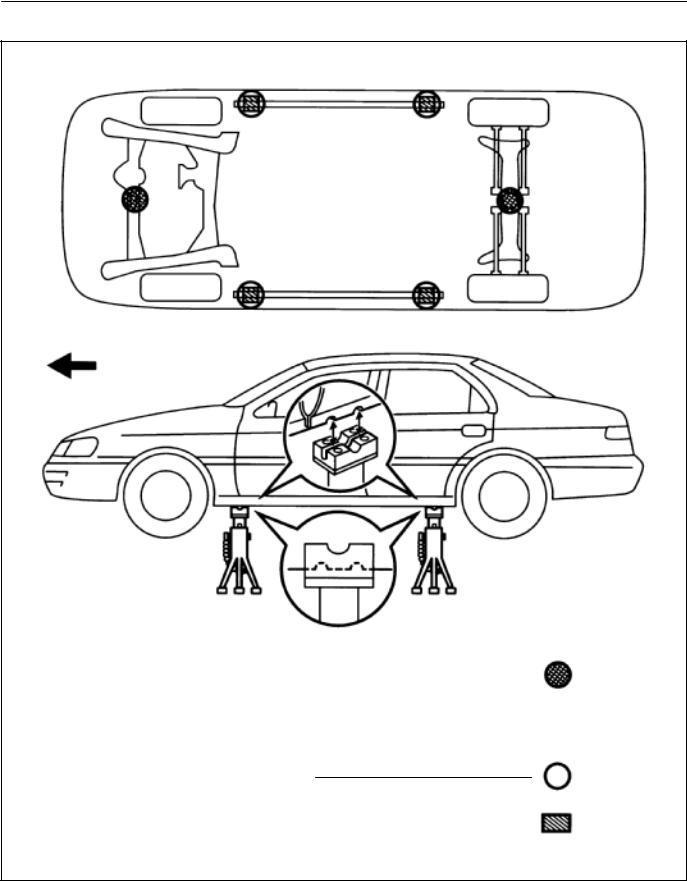
IN±8
INTRODUCTION ± REPAIR INSTRUCTIONS
IN0CP±03
VEHICLE LIFT AND SUPPORT LOCATIONS
Front
JACK POSITION |
|
|
|
Front..................... |
Front crossmember |
Rear..................... |
Rear axle beam |
CAUTION : When jacking±up the rear and front, make sure the car is not carrying any extra weight.
PANTOGRAPH JACK POSITION
SUPPORT POSITION
Safety stand and swing arm type lift ...........................................
N20619
Author : |
Date : |
8 |
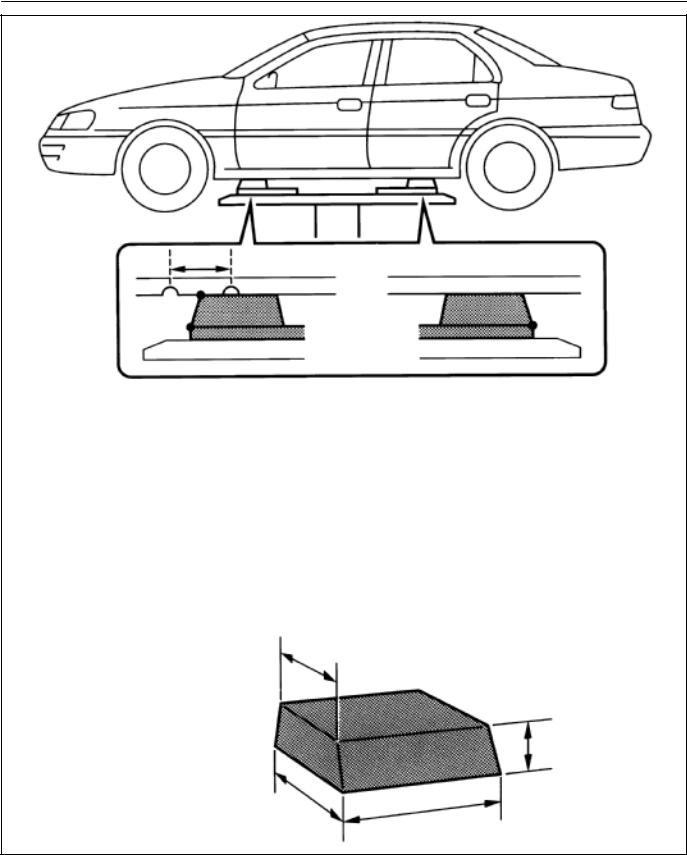
IN±9
INTRODUCTION ± REPAIR INSTRUCTIONS
PLATE TYPE LIFT
|
L |
|
|
||
|
B |
|
|
||
A |
|
|
Attachment |
|
C |
|
|
|
|||
|
|
|
|
||
HINT : |
|
Left and right set position |
Place the vehicle over the center of the lift. |
Front and rear set position |
Align the cushion gum ends of the plate |
|
|
|
with the attachment lower ends (A, C). |
|
Align the attachment upper end (B) with the |
|
front jack supporting point (L). |
Attachment dimensions |
|
85 mm (3.35 in.)
70 mm (2.76 in.)
100 mm (3.94 in.)
200 mm (7.87 in.)
N20620
Author : |
Date : |
9 |
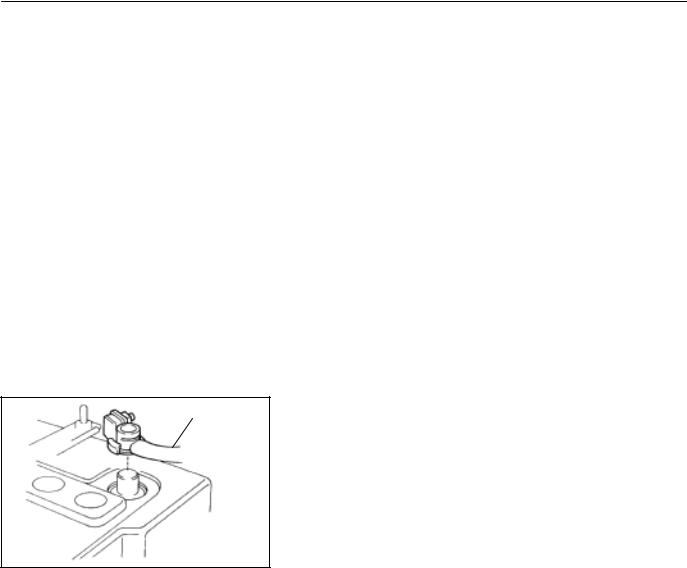
IN±10
INTRODUCTION ± FOR ALL OF VEHICLES
FOR ALL OF VEHICLES
IN0CQ±03
PRECAUTION
1.FOR VEHICLES EQUIPPED WITH SRS AIRBAG AND SEAT BELT PRETENSIONER
Negative Cable
BO4111
(a)The 1999 CAMRY is equipped with an SRS (Supplemental Restraint System), such as the driver airbag, front passenger airbag assembly, side airbag assembly and seat belt pretensioner.
Failure to carry out service operations in the correct sequence could cause the supplemental restraint system to unexpectedly deploy during servicing, possibly leading to a serious accident.
Further, if a mistake is made in servicing the supplemental restraint system, it is possible the SRS may fail to operate when required. Before servicing (including removal or installation of parts, inspection or replacement), be sure to read the following items carefully, then follow the correct procedure described in this manual.
(b)GENERAL NOTICE
(1)Malfunction symptoms of the supplemental restraint system are difficult to confirm, so the diagnostic trouble codes become the most important source of information when troubleshooting. When troubleshooting the supplemental restraint system, always inspect the diagnostic trouble codes before disconnecting the battery (See page DI±626).
(2)Work must be started after 90 seconds from the time the ignition switch is turned to the ºLOCKº position and the negative (±) terminal cable is disconnected from the battery.
(The supplemental restraint system is equipped with a back±up power source so that if work is started within 90 seconds of disconnecting the negative (±) terminal cable from the battery, the SRS may deploy.)
When the negative (±) terminal cable is disconnected from the battery, memory of the clock and audio systems will be cancelled. So before starting work, make a record of the contents memorized by the each memory system. Then when work is finished, reset the clock and audio systems as before. To avoid erasing the memory of each memory system, never use a back±up power supply from another battery.
Author : |
Date : |
10 |
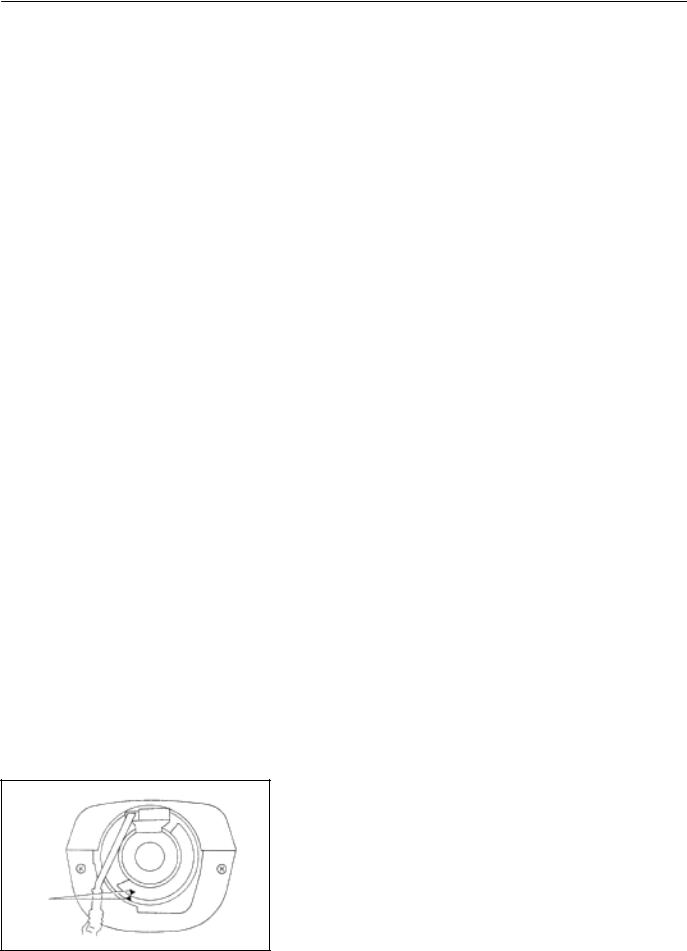
IN±11
INTRODUCTION ± FOR ALL OF VEHICLES
(3)Even in cases of a minor collision where the SRS does not deploy, the steering wheel pad, front passenger airbag assembly, side airbag assembly and seat belt pretensioner should be inspected (See page RS±16, RS±29, and BO±127).
(4)Never use SRS parts from another vehicle. When replacing parts, replace them with new parts.
(5)Before repairs, remove the airbag sensor if shocks are likely to be applied to the sensor during repairs.
(6)Never disassemble and repair the airbag sensor assembly, steering wheel pad, front passenger airbag assembly, side airbag assembly or seat belt pretensioner.
(7)If the airbag sensor assembly, steering wheel pad, front passenger airbag assembly, side airbag assembly or seat belt pretensioner has been dropped, or if there are cracks, dents or other defects in the case, bracket or connector, replace them with new ones.
(8)Do not directly expose the airbag sensor assembly, steering wheel pad, front passenger airbag assembly, side airbag assembly or seat belt pretensioner to hot air or flames.
(9)Use a volt/ohmmeter with high impedance (10 kΩ/V minimum) for troubleshooting of the electrical circuit.
(10)Information labels are attached to the periphery of the SRS components. Follow the instructions on the notices.
(11)After work on the supplemental restraint system is completed, check the SRS warning light (See page DI±626).
(c)SPIRAL CABLE (in Combination Switch)
The steering wheel must be fitted correctly to the steering column with the spiral cable at the neutral position, otherwise cable disconnection and other troubles may result. Refer to SR±16 of this manual concerning correct steering wheel installation.
Marks
W02655
Author : |
Date : |
11 |
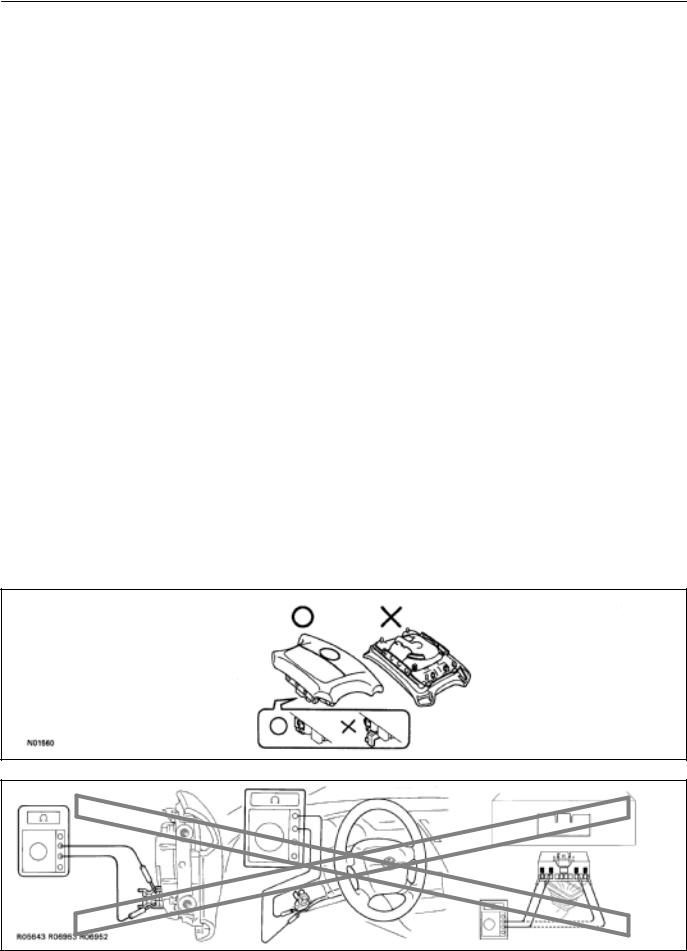
IN±12
INTRODUCTION ± FOR ALL OF VEHICLES
(d)STEERING WHEEL PAD (with Airbag)
(1)When removing the steering wheel pad or handling a new steering wheel pad, it should be placed with the pad top surface facing up.
In this case, the twin±lock type connector lock lever should be in the locked state and care should be taken to place it so the connector will not be damaged. In addition do not store a steering wheel pad on top of another one. Storing the pad with its metallic surface up may lead to a serious accident if the airbag inflates for some reason.
(2)Never measure the resistance of the airbag squib. (This may cause the airbag to deploy, which is very dangerous.)
(3)Grease should not be applied to the steering wheel pad and the pad should not be cleaned with detergents of any kind.
(4)Store the steering wheel pad where the ambient temperature remains below 93°C (200°F), without high humidity and away from electrical noise.
(5)When using electric welding, first disconnect the airbag connector (yellow color and 2 pins) under the steering column near the combination switch connector before starting work.
(6)When disposing of a vehicle or the steering wheel pad alone, the airbag should be deployed using an SST before disposal (See page RS±18).
Carry out the operation in a safe place away from electrical noise.
Example: |
Correct |
Wrong |
|
|
|
|
Z13953 |
Example: |
|
|
|
|
Z13950 |
Author : |
Date : |
12 |
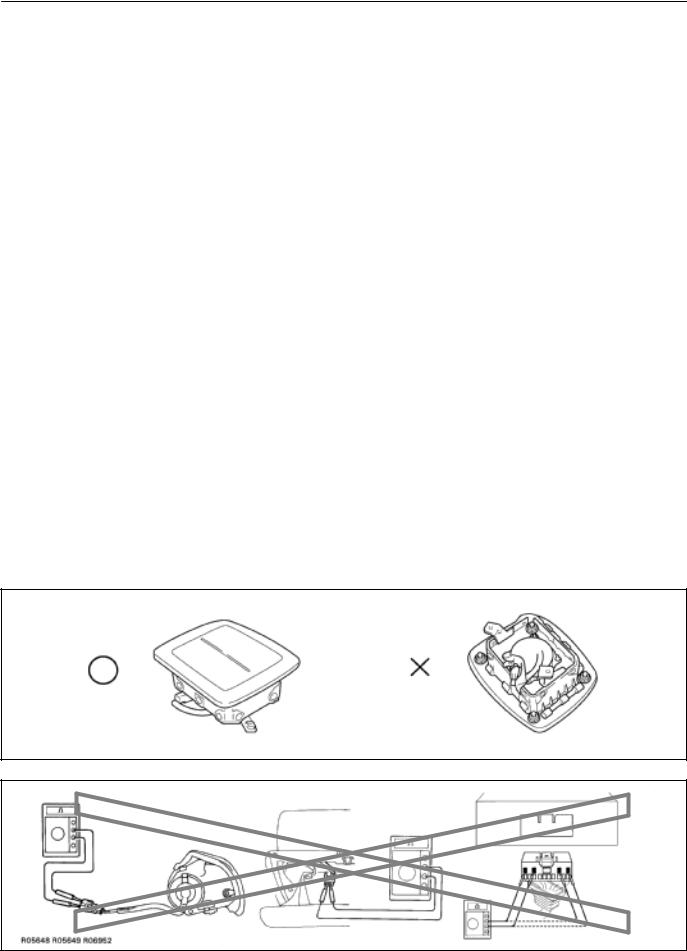
IN±13
INTRODUCTION ± FOR ALL OF VEHICLES
(e)FRONT PASSENGER AIRBAG ASSEMBLY
(1)Always store a removed or new front passenger airbag assembly with the airbag deployment direction facing up.
Storing the airbag assembly with the airbag deployment direction facing down could cause a serious accident if the airbag inflates.
(2)Never measure the resistance of the airbag squib. (This may cause the airbag to deploy, which is very dangerous.)
(3)Grease should not be applied to the front passenger airbag assembly and the airbag door should not be cleaned with detergents of any kind.
(4)Store the airbag assembly where the ambient temperature remains below 93°C (200°F), without high humidity and away from electrical noise.
(5)When using electric welding, first disconnect the airbag connector (yellow color and 2 pins) installed on the assembly before starting work.
(6)When disposing of a vehicle or the airbag assembly alone, the airbag should be deployed using an SST before disposal (See page RS±31).
Perform the operation in a safe place away from electrical noise.
Example:
Correct |
Wrong |
|
|
B00696 |
Example: |
|
|
|
|
Z13951 |
Author : |
Date : |
13 |
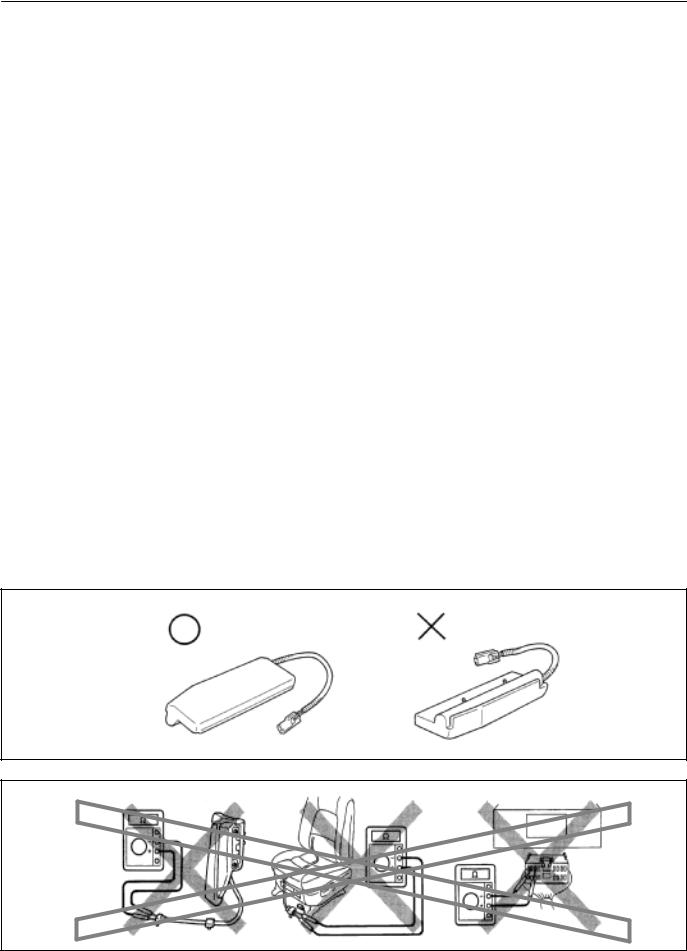
IN±14
INTRODUCTION ± FOR ALL OF VEHICLES
(f)SIDE AIRBAG ASSEMBLY
(1)Always store a removed or new side airbag assembly with the airbag deployment direction facing up. Storing the airbag assembly with the airbag deployment direction facing down could cause a serious accident if the airbag deploys.
(2)Never measure the resistance of the airbag squib. (This may cause the airbag to deploy, which is very dangerous.)
(3)Grease should not be applied to the side airbag assembly and the surface should not be cleaned with detergents of any kind.
(4)Store the airbag assembly where the ambient temperature remains below 93°C (200°F), without high humidity and away from electrical noise.
(5)When using electric welding, first disconnect the airbag connector (yellow color and 2 pins) under the seat before starting work.
(6)When disposing of a vehicle or the side airbag assembly alone, the airbag should be deployed using an SST before disposal (See page RS±42, RS±55). Perform the operation in a safe place away from electrical noise.
Example: |
Correct |
Wrong |
|
|
B02129 |
Example: |
|
|
|
|
N21642 |
Author : |
Date : |
14 |
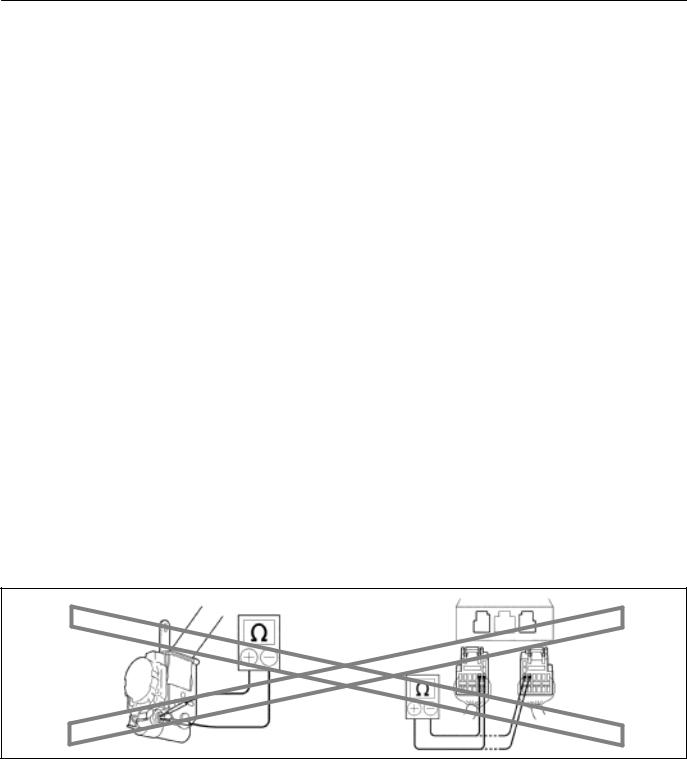
IN±15
INTRODUCTION ± FOR ALL OF VEHICLES
(g)SEAT BELT PRETENSIONER
(1)Never measure the resistance of the seat belt pretensioner. (This may cause the seat belt pretensioner to activate, which is very dangerous.)
(2)Never disassemble the seat belt pretensioner.
(3)Never install the seat belt pretensioner in another vehicle.
(4)Store the seat belt pretensioner where the ambient temperature remains below 80°C (176°F) and away from electrical noise without high humidity.
(5)When using electric welding, first disconnect the connector (yellow color and 2 pins) before starting work.
(6)When disposing of a vehicle or the seat belt pretensioner alone, the seat belt pretensioner should be activated before disposal (See page BO±128). Perform the operation in a safe place away from electrical noise.
(7)The seat belt pretensioner is hot after activation, so let it cool down sufficiently before the disposal. However never apply water to the seat belt pretensioner.
Example: |
B02121 |
Author : |
Date : |
15 |

IN±16
INTRODUCTION ± FOR ALL OF VEHICLES
(h)AIRBAG SENSOR ASSEMBLY
(1)Never reuse the airbag sensor assembly involved in a collision when the SRS has deployed.
(2)The connectors to the airbag sensor assembly should be connected or disconnected with the sensor mounted on the floor. If the connectors are connected or disconnected while the airbag sensor assembly is not mounted to the floor, it could cause undesired ignition of the supplemental restraint system.
(3)Work must be started after 90 seconds from the time the ignition switch is turned to the ºLOCKº position and the negative (±) terminal cable is disconnected from the battery, even if only loosing the set bolts of the airbag sensor assembly.
(i)WIRE HARNESS AND CONNECTOR
The SRS wire harness is integrated with the instrument panel wire harness assembly. All the connectors in the system are a standard yellow color. If the SRS wire harness becomes disconnected or the connector becomes broken due to an accident, etc., repair or replace it as shown on page RS±73.
Author : |
Date : |
16 |

IN±17
INTRODUCTION ± FOR ALL OF VEHICLES
2. FOR VEHICLES EQUIPPED WITH A CATALYTIC CONVERTER CAUTION:
If large amount of unburned gasoline flows into the converter, it may overheat and create a fire hazard. To prevent this, observe the following precautions and explain them to your customer.
(a)Use only unleaded gasoline.
(b)Avoid prolonged idling.
Avoid running the engine at idle speed for more than 20 minutes.
(c)Avoid spark jump test.
(1)Perform spark jump test only when absolutely necessary. Perform this test as rapidly as possible.
(2)While testing, never race the engine.
(d)Avoid prolonged engine compression measurement.
Engine compression tests must be done as rapidly as possible.
(e)Do not run engine when fuel tank is nearly empty.
This may cause the engine to misfire and create an extra load on the converter.
(f)Avoid coasting with ignition turned off.
(g)Do not dispose of used catalyst along with parts contaminated with gasoline or oil.
3.IF VEHICLE IS EQUIPPED WITH MOBILE COMMUNICATION SYSTEM
For vehicles with mobile communication systems such as two±way radios and cellular telephones, observe the following precautions.
(1)Install the antenna as far as possible away from the ECU and sensors of the vehicle's electronic system.
(2)Install the antenna feeder at least 20 cm (7.87 in.) away from the ECU and sensors of the vehicle's electronic systems. For details about ECU and sensors locations, refer to the section on the applicable component.
(3)Avoid winding the antenna feeder together with other wiring as much as possible, and also avoid running the antenna feeder parallel with other wire harnesses.
(4)Check that the antenna and feeder are correctly adjusted.
(5)Do not install powerful mobile communications system.
Author : |
Date : |
17 |
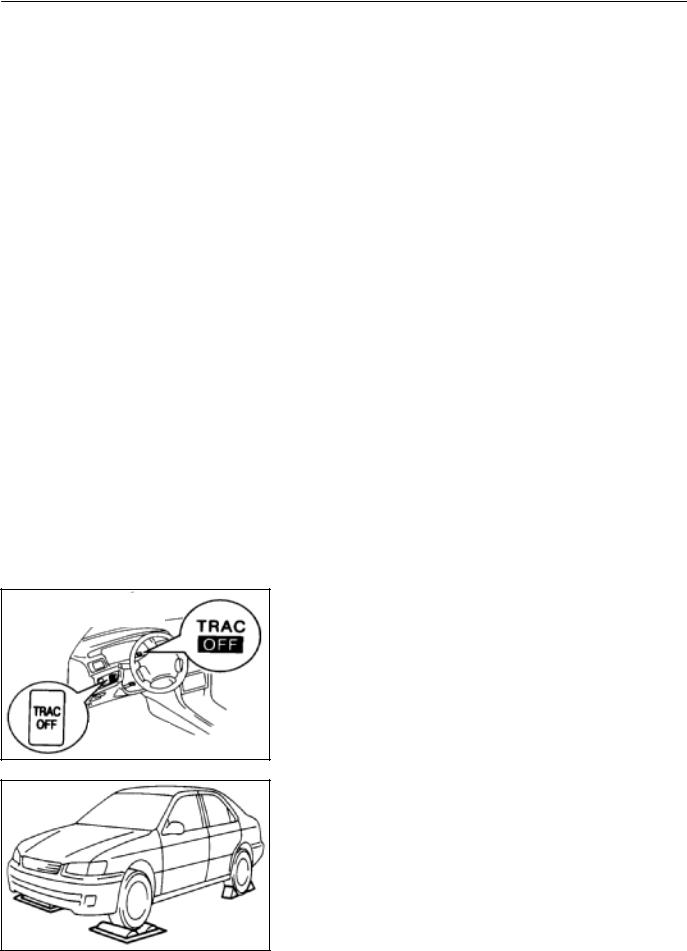
IN±18
INTRODUCTION ± FOR ALL OF VEHICLES
4. FOR USING OBD II SCAN TOOL OR TOYOTA HAND±HELD TESTER CAUTION:
Observe the following items for safety reasons:
Before using the OBD II scan tool or TOYOTA hand±held tester, the OBD II scan tool's instruction book or TOYOTA hand±held tester's operator manual should be read thoroughly.
Be sure to route all cables securely when driving with the OBD II scan tool or TOYOTA hand± held tester connected to the vehicle. (i.e. Keep cables away from feet, pedals, steering wheel and shift lever.)
Two persons are required when test driving with the OBD II scan tool or TOYOTA hand±held tester, one person to drive the vehicle and the other person to operate the OBD II scan tool or TOYOTA hand±held tester.
TRAC OFF
Indicator Light
TRAC Cut
Switch
5.FOR VEHICLES EQUIPPED WITH TRACTION CONTROL (TRAC) SYSTEM
NOTICE:
When using a 2±wheel drum tester such as a speedometer tester or chassis dynamometer, etc., or jacking up the front wheels and driving the wheels, always push in the TRAC cut (ºTRAC OFFº) switch and turn the TRAC system OFF.
Confirm TRAC system is OFF
(1)Press the TRAC cut (ºTRAC OFFº) switch.
(2)Check that the TRAC OFF indicator light comes on when the TRAC system is turned OFF by the TRAC cut switch.
HINT:
TRAC cut switch is reset after the ignition switch has been turned OFF and ON.
N21624 The TRAC system can be operated.
(3)Begin measurements.
N21622
Author : |
Date : |
18 |

IN±19
INTRODUCTION ± FOR ALL OF VEHICLES
(4)Press the TRAC cut switch to turn the TRAC to the operative mode and check that the TRAC OFF indicator light goes off.
HINT:
The SLIP indicator light blinks when the TRAC system in operation.
N21623
Author : |
Date : |
19 |
IN±20 |
INTRODUCTION ± HOW TO TROUBLESHOOT ECU CONTROLLED |
|
SYSTEMS |
HOW TO TROUBLESHOOT ECU CONTROLLED SYSTEMS
IN05Y±07
GENERAL INFORMATION
A large number of ECU controlled systems are used in the 1999 CAMRY. In general, the ECU controlled system is considered to be a very intricate system requiring a high level of technical knowledge and expert skill to troubleshoot. However, the fact is that if you proceed to inspect the circuits one by one, troubleshooting of these systems is not complex. If you have adequate understanding of the system and a basic knowledge of electricity, accurate diagnosis and necessary repair can be performed to locate and fix the problem. This manual is designed through emphasis of the above standpoint to help service technicians perform accurate and effective troubleshooting, and is compiled for the following major ECU controlled systems:
The troubleshooting procedure and how to make use of it are described on the following pages.
1. |
5S±FE Engine |
DI±1 |
|
|
|
2. |
1MZ±FE Engine |
DI±195 |
|
|
|
3. |
A140E Automatic Transaxle |
DI±387 |
|
|
|
4. |
A541E Automatic Transaxle |
DI±436 |
|
|
|
5. |
Anti±Lock Brake System (DENSO made) |
DI±491 |
|
|
|
6. |
Anti±Lock Brake System (BOSCH made) |
DI±537 |
|
|
|
7. |
ABS & Traction Control System |
DI±572 |
|
|
|
8. |
Supplemental Restraint System |
DI±624 |
|
|
|
9. |
Wireless Door Lock Control System |
DI±800 |
|
|
|
10.Theft Deterrent System |
DI±826 |
|
|
|
|
11.Cruise Control System |
DI±868 |
|
|
|
|
12.Engine Immobiliser System |
DI±919 |
|
|
|
|
FOR USING OBD II SCAN TOOL OR TOYOTA HAND±HELD TESTER
Before using the scan tool or tester, the scan tool's instruction book or tester's operator manual should be read thoroughly.
If the scan tool or tester cannot communicate with ECU controlled systems when you have connected the cable of the scan tool or tester to DLC3, turned the ignition switch ON and operated the scan tool, there is a problem on the vehicle side or tool side.
(1)If communication is normal when the tool is connected to another vehicle, inspect the diagnosis data link line (Bus line) or ECU power circuit of the vehicle.
(2)If communication is still not possible when the tool is connected to another vehicle, the problem is probably in the tool itself, so perform the Self Test procedures outline in the Tester Operator's Manual.
Author : |
Date : |
20 |
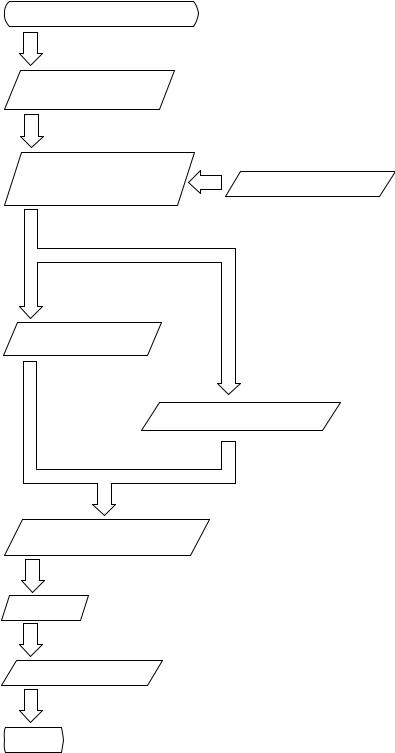
INTRODUCTION ± HOW TO TROUBLESHOOT ECU CONTROLLED |
IN±21 |
SYSTEMS |
|
|
IN05W±08 |
HOW TO PROCEED WITH TROUBLESHOOTING
Carry out troubleshooting in accordance with the procedure on the following page. Here, only the basic procedure is shown. Details are provided in Diagnostics section, showing the most effective methods for each circuit. Confirm the troubleshooting procedures first for the relevant circuit before beginning troubleshooting of that circuit.
Vehicle Brought to Workshop
1
1Customer Problem Analysis
2Symptom Confirmation and Diagnostic Trouble Code Check
Ask the customer about the conditions and the environment when the problem occurred.
3
Symptom Simulation
2, 3
4
6
7
8
Confirm the symptoms and the problem conditions, and check the diagnostic trouble codes.
(When the problem symptoms do not appear during confirmation, use the symptom simulation method described later on.)
Diagnostic Trouble
Code Chart
5
Problem Symptoms Table
Circuit Inspection or Parts Inspection
Repair
Confirmation Test
End
4, 5, 6
Check the results obtained in Step 2, then confirm the inspection procedure for the system or the part which should be checked using the diagnostic trouble code chart or the problem symptoms table.
7
Check and repair the affected system or part in accordance with the instructions in Step 6.
8
After completing repairs, confirm that the problem has been eliminated.
(If the problem is not reproduced, perform the confirmation test under the same conditions and in the same environment as when it occurred for the first time.)
Author : |
Date : |
21 |
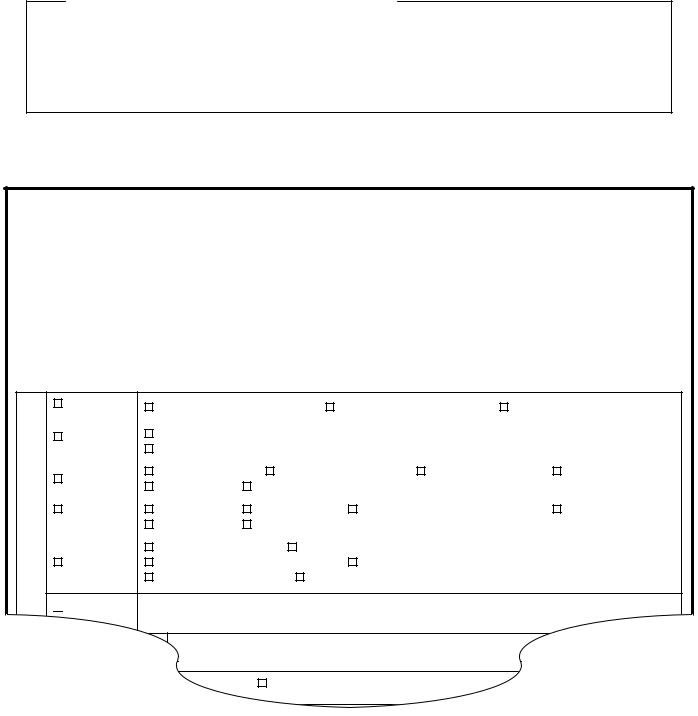
IN±22 |
INTRODUCTION ± HOW TO TROUBLESHOOT ECU CONTROLLED |
|
SYSTEMS |
1.CUSTOMER PROBLEM ANALYSIS
In troubleshooting, the problem symptoms must be confirmed accurately and all preconceptions must be cleared away in order to give an accurate judgment. To ascertain just what the problem symptoms are, it is extremely important to ask the customer about the problem and the conditions at the time it occurred.
Important Point in the Problem Analysis:
The following 5 items are important points in the problem analysis. Past problems which are thought to be unrelated and the repair history, etc. may also help in some cases, so as much information as possible should be gathered and its relationship with the problem symptoms should be correctly ascertained for reference in troubleshooting. A customer problem analysis table is provided in Diagnostics section for each system for your use.
Important Points in the Customer Problem Analysis
What ±±±±± Vehicle model, system name
When ±±±±± Date, time, occurrence frequency
Where ±±±±± Road conditions
Under what conditions? ±±±±± Running conditions, driving conditions, weather conditions
How did it happen? ±±±±± Problem symptoms
(Sample) Engine control system check sheet.
CUSTOMER PROBLEM ANALYSIS CHECK
ENGINE CONTROL SYSTEM Check Sheet |
|
Inspector's |
|
||
|
|
|
Name |
|
|
|
|
|
|
|
|
Customer's Name |
|
|
|
Model and Model |
|
|
|
|
Year |
|
|
|
|
|
|
|
|
Driver's Name |
|
|
|
Frame No. |
|
|
|
|
|
|
|
Data Vehicle |
|
|
|
Engine Model |
|
Brought in |
|
|
|
|
|
|
|
|
|
|
|
License No. |
|
|
|
Odometer Reading |
km |
|
|
|
miles |
||
|
|
|
|
|
|
Problem Symptoms
Engine does |
Engine does not crank |
|
No initial combustion |
No complete combustion |
|
|
|||||||
not Start |
|
|
|
||||||||||
|
|
|
|
|
|
|
|
|
|
|
|
|
|
Difficult to |
Engine cranks slowly |
|
|
|
|
|
|
|
|
||||
Start |
Other |
|
|
|
|
|
|
|
|
|
|
|
|
|
|
|
|
|
|
|
|
|
|
|
|
|
|
Poor Idling |
Incorrect first idle |
Idling rpm is abnormal |
High ( |
rpm) |
Low ( |
rpm) |
|||||||
Rough idling |
Other |
|
|
|
|
|
|
|
|
||||
|
|
|
|
|
|
|
|
|
|||||
|
|
|
|
|
|
|
|
|
|
|
|
|
|
Poor |
Hesitation |
Back fire |
|
|
Muffler explosion (after±fire) |
|
Surging |
|
|
||||
Drive ability |
Knocking |
Other |
|
|
|
|
|
|
|
|
|||
|
|
|
|
|
|
|
|
|
|||||
|
|
|
|
|
|
|
|
|
|
|
|
|
|
|
Soon after starting |
|
|
|
After accelerator pedal depressed |
|
|
|
|
||||
Engine Stall |
After accelerator pedal released |
|
During A/C operation |
|
|
|
|
||||||
|
Shifting from N to D |
Other |
|
|
|
|
|
|
|
||||

 Others
Others
Data Problem
Constant |
Sometimes ( |
times per |
day/month) |
Author : |
Date : |
22 |

INTRODUCTION ± HOW TO TROUBLESHOOT ECU CONTROLLED |
IN±23 |
SYSTEMS |
|
2.SYMPTOM CONFIRMATION AND DIAGNOSTIC TROUBLE CODE CHECK
The diagnostic system in the 1999 CAMRY fulfills various functions. The first function is the Diagnostic Trouble Code Check in which a malfunction in the signal circuits to the ECU is stored in code in the ECU memory at the time of occurrence, to be output by the technician during troubleshooting. Another function is the Input Signal Check which checks if the signals from various switches are sent to the ECU correctly. By using these check functions, the problem areas can be narrowed down quickly and troubleshooting can be performed effectively. Diagnostic functions are incorporated in the following systems in the CAMRY.
System |
Diagnostic Trouble |
Input Signal Check |
Diagnostic Test |
|
Code Check |
(Sensor Check) |
Mode (Active Test) |
||
|
||||
|
|
|
|
|
Engine (5S±FE) |
(with Check |
|
|
|
|
Mode) |
|
||
|
|
|
||
Engine (1MZ±FE) |
(with Check |
|
|
|
|
Mode) |
|
||
|
|
|
||
Automatic Transaxle (A140E) |
(with Check |
|
|
|
|
Mode) |
|
|
|
Automatic Transaxle (A541E) |
(with Check |
|
|
|
|
Mode) |
|
|
|
Anti±Lock Brake System (DENSO made) |
|
|
|
|
Anti±Lock Brake System (BOSCH made) |
|
|
|
|
ABS & Traction Control System |
|
|
|
|
Supplemental Restraint System |
|
|
|
|
Wireless Door Lock Control System |
|
|
|
|
Theft Deterrent System |
|
|
|
|
Cruise Control System |
|
|
|
|
Engine Immobiliser System |
|
|
|
In diagnostic trouble code check, it is very important to determine whether the problem indicated by the diagnostic trouble code is still occurring or occurred in the past but returned to normal at present. In addition, it must be checked in the problem symptom check whether the malfunction indicated by the diagnostic trouble code is directly related to the problem symptom or not. For this reason, the diagnostic trouble codes should be checked before and after the symptom confirmation to determine the current conditions, as shown in the table below. If this is not done, it may, depending on the case, result in unnecessary troubleshooting for normally operating systems, thus making it more difficult to locate the problem, or in repairs not pertinent to the problem. Therefore, always follow the procedure in correct order and perform the diagnostic trouble code check.
DIAGNOSTIC TROUBLE CODE CHECK PROCEDURE
Diagnostic Trouble |
Confirmation |
Diagnostic Trouble |
Problem Condition |
|
Code Check (Make a |
||||
of Symptoms |
Code Check |
|||
note of and then clear) |
|
|||
|
|
|
||
|
|
|
|
|
Diagnostic Trouble |
Problem symptoms |
Same diagnostic |
Problem is still occurring in the diagnostic |
|
Code Display |
exist |
trouble code is |
circuit |
|
|
|
displayed |
|
|
|
|
|
|
|
|
|
Normal code is |
The problem is still occurring in a place |
|
|
|
displayed |
other than in the diagnostic circuit |
|
|
|
|
(The diagnostic trouble code displayed |
|
|
|
|
first is either for a past problem or it is a |
|
|
|
|
secondary problem) |
|
|
|
|
|
|
|
No problem |
|
The problem occurred in the diagnostic |
|
|
symptoms exist |
|
circuit in the past |
|
|
|
|
|
|
Normal Code Display |
Problem symptoms |
Normal code is |
The problem is still occurring in a place |
|
|
exist |
displayed |
other than in the diagnostic circuit |
|
|
|
|
|
|
|
No problem |
Normal code is |
The problem occurred in a place other |
|
|
symptoms exist |
displayed |
than in the diagnostic circuit in the past |
|
|
|
|
|
Author : |
Date : |
23 |
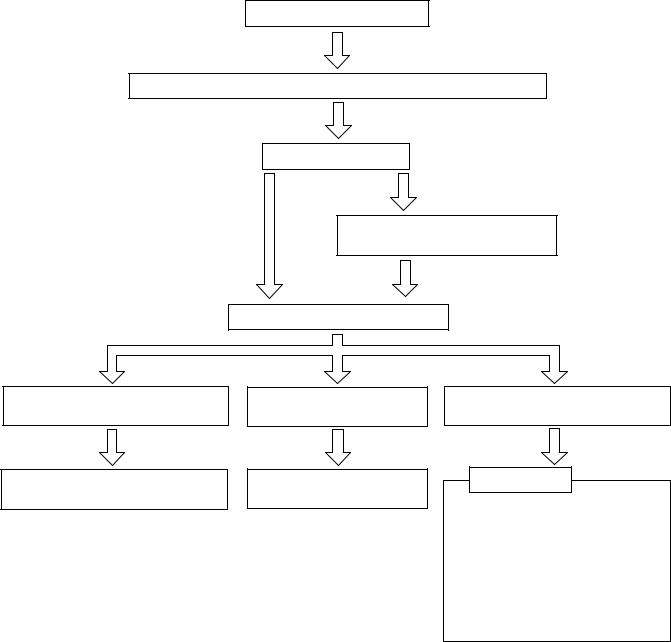
IN±24 |
INTRODUCTION ± HOW TO TROUBLESHOOT ECU CONTROLLED |
|
SYSTEMS |
Taking into account the points on the previous page, a flow chart showing how to proceed with troubleshooting using the diagnostic trouble code check is shown below. This flow chart shows how to utilize the diagnostic trouble code check effectively, then by carefully checking the results, indicates how to proceed either to diagnostic trouble code troubleshooting or to troubleshooting of problem symptoms table.
Diagnostic trouble code check
Making a note of and clearing of the diagnostic trouble codes displayed
Symptom confirmation
Problem symptoms |
No problem symptoms |
||
exist |
|||
exist |
|
||
|
|
||
|
Simulation test using the symptom |
||
|
simulation methods |
||
Diagnostic trouble code check
Diagnostic trouble code displayed
Problem symptoms exist
Troubleshooting of problem indicated by diagnostic trouble code
Normal code displayed
Problem symptoms exist
Troubleshooting of each problem symptom
Normal code displayed
No problem symptoms exist
System Normal
If a diagnostic trouble code was displayed in the initial diagnostic trouble code check, it indicates that the trouble may have occurred in a wire harness or connector in that circuit in the past. Therefore, check the wire harness and connectors (See page IN±31).
Author : |
Date : |
24 |
